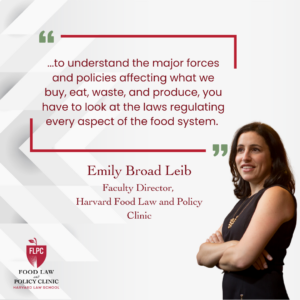Originally published by USA Today on February 14, 2017. Written by Matthew Zahnzinger.
You’re cleaning out your fridge and pantry, amazed at just how big the pile of stuff you’re going to throw out is—solely because it’s gone past its expiration date. Because if it’s past its expiration date, it’s gone bad, right?
Wrong! Well… maybe. In the interest of saving you some money and cutting down on food waste, we’re here to dispel some common myths behind those pesky expiration dates, and walk you through some tips and tricks for checking if your food is still good to eat.
Expired, But Edible
Did you know that there’s no national regulation detailing what expiration dates actually mean? According to a 2013 study from the Harvard Law School Food Law and Policy Clinic—called The Dating Game—there is significant inconsistency in food labeling which leads to unnecessary food waste.
We talked to study lead author and Harvard Law professor Emily Broad Leib back in 2015. “It’s up to the discretion of the manufacturer,” she said. “These dates were not intended to promote safety. Instead, manufacturers use them to relate more to taste or quality. It’s just that consumers don’t interpret them that way.” Expiration dates often reflect taste, not safety or nutritional value. Let that sink in: Expiration dates often reflect taste, not safety or nutritional value. That’s why you see so many different iterations, including “Sell By,” “Use By,” “Best By,” and even “Best Flavor By.” And a product that’s past any one of those dates might be perfectly safe to eat.
Use Your Senses
Broad Leib and her co-authors recommend a series of new labeling guidelines. But until that happens, how do you know if your food is safe to eat? Well, use your eyes and nose—and follow your gut. Open the lid and sniff it. If it smells fine and it was stored properly, it’s likely okay to eat. It might not be as tasty as it would be if you ate it before the “expiration date” but odds are good that it’s perfectly safe. Conversely, don’t let your eyes fool you when it comes to fresh food like produce. Bumps or bruises don’t mean something is ruined. After all, farmers have to throw out literal tons of food every year because it doesn’t look like what you see in those flawless supermarket ads.
It might sound obvious, but you can also save food by freezing it. If you can’t use your bread or produce before it goes bad, freeze it and then cook it thoroughly when thawed. After all, it doesn’t matter how your spinach looks if you’re just going to sauté it.
How is it Stored?
Fresh foods like deli meat and baked goods that aren’t shelf stable run a higher risk of spoilage. However, something like dehydrated beans or canned vegetables can last a long time. When we interviewed Doug Rauch, a former president at Trader Joe’s who opened the nonprofit grocery store The Daily Table, he told us that canned food lasts a lot longer than you might think. “Canned meat or fish can last for decades,” he said. “More acidic foods like tomatoes can cut that back, but it’s still good for a long time.” Even a can that’s started to rust should still be okay, as long as it isn’t bulging and the seal is intact.
Now, there will obviously be exceptions. If a can’s seal has lost its integrity, or if plastic packaging has been torn and there’s evidence of bugs or rot, throw it out. But if not, then it’s likely going to be good for a long time.
Buck the System
So there you have it. That little date stamped on your pasta isn’t gospel—just a guideline. Food companies want people to eat their food when it tastes best, and while we aren’t inclined to go after food that’s kinda funky when there’s a better choice, a proper understanding of “expiration” dates could drastically cut down on food waste—not to mention wasted money out of your pocket. So remember: check the packaging, use your senses, cook food thoroughly, and don’t let the perfect become the enemy of the good. Now if you’ll excuse us, we’re off to make a sandwich with a bruised tomato and some 10-year-old canned tuna.


Health Law & Policy, Commentary
Braidwood Management v. Becerra: Updated FAQs for Health Advocates and Providers
July 22, 2024